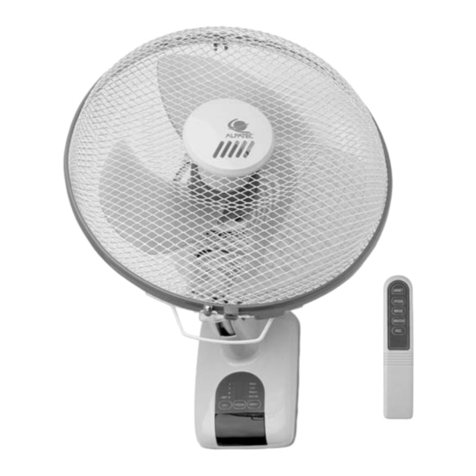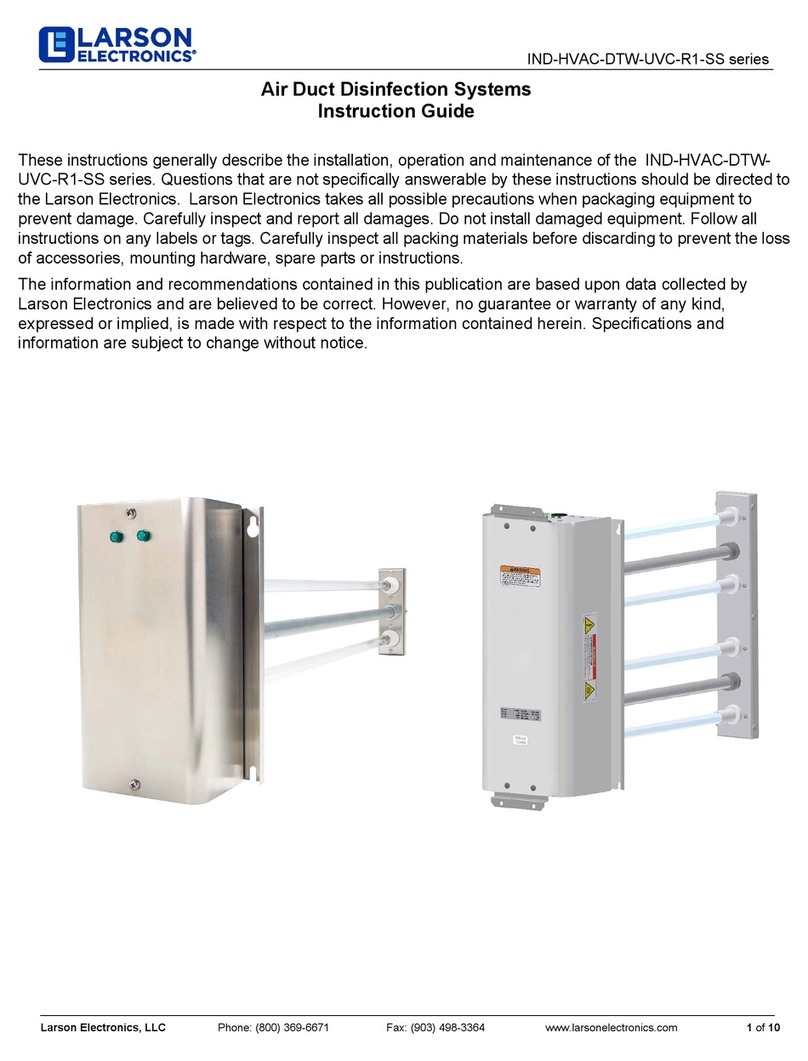KOSMEN KM-480DS User manual

1
HƯỚNG DẪN SỬ DỤNG
MÁY HÚT ẨM ÂM TRẦN
KOSMEN KM-480DS
www.kosmen.vn

2
Cảm ơn bạn đã chọn Máy hút ẩm âm trần
KOSMEN KM-480DS
Kosmen khuyên bạn nên đọc kỹ hướng dẫn trước khi sử dụng thiết bị. Tài liệu
này sẽ cung cấp cho bạn thông tin cần thiết để sử dụng và bảo trì máy đúng
cách. Hình ảnh chỉ mang tính tham khảo, chi tiết phụ thuộc vào sản phẩm cuối
cùng.

3
Contents
1. Safety Instructions ...............................................................................................................5
1.1 Safety and warning .......................................................................................................5
1.2 Working condition.........................................................................................................5
1.3 Contents of the manual.................................................................................................6
2. Equipment Introduction......................................................................................................6
2.1 Product description.......................................................................................................6
2.2 Equipment principle .....................................................................................................6
2.3 Configuration and data sheet.......................................................................................6
3 Equipment Installation.........................................................................................................7
3.1 Introduction ...................................................................................................................7
3.2 Shipping and storage.....................................................................................................7
3.3 Open the case for inspection.........................................................................................7
3.4 Movement of dehumidifier ...........................................................................................7
3.5 Selection of installation location...................................................................................7
3.6 Basic installation conditions.........................................................................................8
3.7 Air duct connection .......................................................................................................8
3.8 Water pipe connection...................................................................................................8
3.9 Electrical connection.....................................................................................................9
3.10 Connection of external sensors...................................................................................9
4. Display Introduction..........................................................................................................10
4.1 General operating instruction....................................................................................10
4.2 Control Details Instruction.........................................................................................10
4.3 Setting details...............................................................................................................12
5. Maintenance .......................................................................................................................14
5.1 Maintenance introduction ..........................................................................................14
5.2 Filter .............................................................................................................................14
5.3 The motor.....................................................................................................................14
5.4 Maintenance list...........................................................................................................14
6. Troubleshooting..................................................................................................................15
6.1 Fault introduction .......................................................................................................15
6.2 Fault causes and troubleshooting methods ...............................................................16
7. Warranty Policy .................................................................................................................17

4
Mục lục
1. Hướng dẫn an toàn ............................................................................................................18
1.1 An toàn và cảnh báo....................................................................................................18
1.2 Môi trường làm việc....................................................................................................18
1.3 Nội dung hướng dẫn....................................................................................................18
2. Giới thiệu sản phẩm...........................................................................................................19
2.1 Mô tả sản phẩm ...........................................................................................................19
2.2 Nguyên lý hoạt động....................................................................................................19
2.3 Cấu hình và thông số kỹ thuật ...................................................................................19
3. Lắp đặt thiết bị...................................................................................................................20
3.1 Giới thiệu......................................................................................................................20
3.2 Vận chuyển và bảo quản.............................................................................................20
3.3 Mở thùng kiểm tra ......................................................................................................20
3.4 Vận chuyển máy hút ẩm .............................................................................................20
3.5 Lựa chọn vị trí lắp đặt ................................................................................................21
3.6 Điều kiện lắp đặt cơ bản .............................................................................................21
3.7 Kết nối ống dẫn khí.....................................................................................................21
3.8 Kết nối ống nước .........................................................................................................21
3.9 Kết nối điện..................................................................................................................22
3.10 Kết nối các cảm biến bên ngoài................................................................................22
4. Giới thiệu màn hình hiển thị.............................................................................................23
4.1 Hướng dẫn vận hành chung .......................................................................................23
4.2 Hướng dẫn điều khiển chi tiết....................................................................................23
4.3 Cài đặt chi tiết..............................................................................................................24
5. Bảo trì..................................................................................................................................26
5.1 Giới thiệu bảo trì .........................................................................................................26
5.2 Bộ lọc ............................................................................................................................27
5.3 Động cơ.........................................................................................................................27
5.4 Danh sách các bộ phận bảo trì ...................................................................................27
6. Khắc phục sự cố .................................................................................................................27
6.1 Lỗi máy.........................................................................................................................27
6.2 Nguyên nhân lỗi và phương pháp khắc phục sự cố .................................................28
7. Chính sách bảo hành .........................................................................................................29

5
1. Safety Instructions
1.1 Safety and warning
The ceiling dehumidifiers meet the safety requirements of the European standards and
specifications and give consideration to the safety of personnel and equipment in design and
manufacturing. In each chapter of this manual, there is safety information, as well as a clear
expenditure of dangerous operations, and a warning function of the danger symbol is marked
in the front. This manual provides the best dehumidifier operating experience and procedures,
but these recommendations are for guidance only and any personal responsibility is not
assumed. When installing and operating equipment, local safety regulations must be
complied with, and everyone must assume the following responsibilities:
Protect the safety of the equipment according to the description and instructions in this
manual. Take care of yourself and others.
Dehumidifier must be operated and maintained by personnel with relevant professional
qualifications.
Electrical parts must be maintained by authorized electrical installers.
It is forbidden to install dehumidifier in the area with explosion-proof device.
Before opening any maintenance panels, make sure that the power to the dehumidifier is
turned off.
When the operation is completed, the dehumidifier should be cooled for at least 15 minutes
before maintenance operations.
If dehumidifier is not maintained, the maintenance panel should be closed.
Dehumidifier is limited to dehumidification of air under normal atmospheric pressure.
It is forbidden to use dehumidifier without the installation of filter device, otherwise it will
cause the heat ex-changer of the dehumidifier to be dirty or corroded, which will eventually
lead to the dehumidification ability become weakened or even lost.
It is forbidden to delete or alter the mark and description on the equipment.
Spare parts with original design shall be used.
1.2. Working condition
The ceiling dehumidifier adopts direct evaporative cooling design, which can dry air under
atmospheric pressure. The equipment can dehumidify air in the 100%RH humidity range and
the temperature range is 5-38 ℃. It is widely used in hotels, office buildings, hospitals,
commercial residences, research laboratories and other places. Its working principle is that
the fan will cool and dehumidify the indoor air or the mixed indoor and outdoor air through
the heat exchanger and then re-heat up and send it back to the room to reduce the indoor
humidity, so as to provide a more comfortable living environment.

6
1.3. Contents of the manual
This manual is for dehumidifier users, including installation, operation, maintenance and
basic fault analysis. The ceiling dehumidifier described in this manual has a system air
volume of 5600 m3/h and a dehumidifier capacity of 20L/h. It is used to extract air from the
central area of the building and deliver the treated air to individual rooms.
2. Equipment Introduction
2.1 Product description
The dehumidifier is designed to meet the requirements of IEC protection level IP21.
2.2 Equipment principle
The fresh air is initially filtered by the filter and sucked into the machine by the fan. It is first
cooled by the evaporator. When the temperature drops to the dew point of the air, the water in
the air will condense out and reach the water tank by the sink below the evaporator. The cold
air that has been dehumidified passes through the condenser to make the air temperature rise,
which can prevent the indoor temperature from falling, and at the same time can make the
condensation pressure of the refrigeration system drop, improving the cooling efficiency.
2.3 Configuration and data sheet

7
Model
KM-480DS
Dehumidifying capacity
480L/D
Votage
380V 3N
Frequency
50Hz
Power input
8400W
Working condition
5-38°C
Refrigerant
R410A
Humidity RH%
10-90%
Compressor
Panasonic
Air inlet size
750*620mm
Air oulet size
1033*338mm
Item size
1280*1220*715mm
3 Equipment Installation
3.1 Introduction
Ceiling dehumidifier can be installed in different places according to the requirements. It can
also be used together with the existing power system or air duct system if required. This
section describes the design of dehumidifier from the factory to the installation of the
equipment required to work, read before the installation of equipment to help the correct
arrangement of work.
3.2 Shipping and storage
In order to ensure the quality and reliable performance of dehumidifier, each equipment has
been inspected before delivery. If dehumidifier needs to be stored for a period of time before
installation, please note:
Factory packaging should not be removed.
Where the equipment is stored can effectively avoid physical damage.
Store under cover to protect against dust, rain and frost.
3.3 Open the case for inspection
Disassemble the shipping package of the equipment and inspect the product to confirm that
the equipment was not damaged during the shipping. If any damage is found, please contact
the equipment manufacturer. If the pipeline connected to the dehumidifier equipment has
been arranged, it should be checked whether the pipeline layout is appropriate. If the
environment and installation conditions are not satisfactory, please contact the manufacturer.
3.4 Movement of dehumidifier
This series of dehumidifier can be carried by forklift, in order to prevent equipment damage
and personnel injury, it is recommended to use the equipment.
3.5 Selection of installation location
For optimal operation and troubleshooting, the ceiling dehumidifier should be installed
indoors. During installation, a maintenance space should be left at the rear of the
dehumidifier to facilitate future inspection and maintenance of the equipment. It is very

8
important to keep the necessary and compact service space for cleaning and maintenance
purposes. To prevent condensation inside the dehumidifier, the unit should not be exposed to
temperatures below the dew point of the process air.
The equipment should be placed in a place close to the socket equipment and easy to
connect.
When the equipment is needed and installed, sufficient maintenance space should be
considered.
3.6 Basic installation conditions
Dehumidifier must be installed horizontally, please be sure to use a level to measure the
equipment after installation of the horizontal Angle. Prevent condensation water residue,
resulting in unit leakage damage to the entire environment.
3.7 Air duct connection
If the air outlet is connected to an air duct, the size of the process air duct shall comply with
the recommended value of ISO7807. For the installation of air duct and elbow flange pipe
joints, the bolt length should not exceed 20mm. For an ideal installation, the air is extracted
from the central area of the room, dehumidified and then distributed to each individual room,
such as bedrooms, offices. When installing the return air outlet and outlet connecting pipe of
the dehumidification unit, the following suggestions should be paid attention to:
Minimize duct length to reduce air system static pressure loss.
To ensure performance, all rigid (galvanized) pipe connections must be airtight.
The air duct should be insulated to avoid condensation on the outer wall of the duct
when the airflow temperature in the duct drops below the dew point temperature of
the outside air, which will cause corrosion of the duct; and to avoid energy loss.
Piping installed directly on the dehumidification unit should be adequately supported
to reduce loads and pressures due to pipe gravity and operation.
If the system is introduced into the dehumidification unit by outdoor fresh air, the air
inlet should be sufficiently high from the ground to prevent the inhalation of dust and
debris. The entrance must be away from possible pollution sources, such as energy
waste, steam and harmful gases.
Dehumidifier can be installed in the room to be dehumidified or in a separate room.
To ensure optimum dehumidification, the fan outlet should be equipped with a
diffuser.
3.8 Water pipe connection
A U-shaped pipe needs to be installed on the drain pipe of the unit. If there is no U-shaped
pipe, due to the negative pressure inside the dehumidifier, there will be airflow from the
drainage pipe into the hanging cabinet, airflow will prevent condensate water into the
drainage pipe, is the condensate overflow of the unit. U-shaped pipe can close the negative
pressure area of the dehumidifier, so that the water from the water tray can flow naturally into
the drain pipe. Try to make the U-shaped pipe connected to the drain pipe and the ground
parallel. A 3/4 inch threaded pipe should also be installed to connect the reserved drain to the
floor drain or toilet.

9
3.9 Electrical connection
!
Electrical connections must be performed by qualified personnel in accordance with the
electrical standards of the location where the equipment is located.
The control circuit of the dehumidifier has been marked with different colors to prevent
confusion. The design of the unit adopts single-phase AC power supply, and the installation
and configuration of electrical equipment are in accordance with the voltage and frequency
calibrated on the equipment nameplate.
The power supply of the dehumidification unit is equipped with a leakage protection
device to make the unit safer.
To ensure optimum dehumidification, the fan outlet should be equipped with a
diffuser.
The dehumidifier must not be operated at voltages and frequencies outside the range
of manufacture.
Before the unit is connected to the main power supply, check the single-phase AC
power supply to ensure that the fluctuation range of the supplied voltage does not
exceed ±10% of the marked voltage and frequency of the equipment. This inspection
is especially important for high load applications (due to the conversion of large
electrical equipment) that can cause voltage fluctuations.
The unit must be grounded and equipped with a power isolating switch to ensure that
the power is cut off during inspection and service of the equipment.
The fusing power of the power supply fuse must be consistent with the power and
type of the installed dehumidifier. Fuses should be installed near the dehumidifier.
The selection of power supply cable and main fuse should correspond to the correct
operating power of the dehumidification unit.
3.10 Connection of external sensors
!
Note: The dehumidifier can be arranged in advance to cooperate with the external
control system, providing wiring blocks for connection to the external control system. When
installing the humidity detection element, its installation position should follow the following
requirements:
To ensure optimum dehumidification, the fan outlet should be equipped with a
diffuser.
Do not install the panel in a place where the relative humidity cannot be accurately
detected, such as near a window or water source.
The humidity detection element shall be installed at a height of 1 to 1.5 meters above
the ground to detect a representative level in the controlled area, or the installation
design shall require it to be installed at a monitoring point.
The detection element shall be installed where it is not affected by dry or wet air and
unexpected airflow in the control area.
The humidity probe should not be placed near the heat dissipation equipment or
exposed to direct sunlight, because the temperature change will affect the actual
detection value.

10
The external control system must be compatible with the low-voltage control circuit
of the dehumidifier.
4. Display Introduction
4.1 General operating instruction
1. Press the power button to power on/off the machine.
2. Mode: Press to change the working mode into dehumidifying model.
3. Humidity setting: Set the humidity value by pressing the or key after starting the
machine. After setting the value, press the key or no operation for 10 seconds, it will
automatically confirm and return to the working state.
If the set humidity is >10% and the indoor humidity sensor is normal:
When the indoor humidity is greater than or equal to the set humidity + 3%, the compressor
is turned on.
When the indoor humidity +1% ≤ set humidity, turn off the compressor.
If the set humidity=10% or the humidity sensor fails:
The equipment enters the continuous dehumidification state and starts the compressor.
4. The machine is equipped with a 485 communication interface (the label 1 on the aviation
plug is the positive terminal, and the label 2 is the negative terminal)
4.2 Control Details Instruction
1. Wind speed control
The wind speed is controlled by manually setting the wind speed. The wind speed defaults to
low speed operation. After the device is turned on, the fan and valve are turned on first, and
then the compressor is turned on.

11
2. Compressor control
If the set humidity is >10% and the indoor humidity sensor is normally working. When the
indoor humidity is higher than or equal to the set humidity + 3%, the compressor will be
turned on automatically.
When the indoor humidity +1% ≤ set humidity, the compressor will be turned off
automatically.
If the set humidity=10% or the humidity sensor fails. The equipment enters the continuous
dehumidification state and the compressor is running.
3. Defrost control
If the setting value of the compressor running time of the defrosting timer is 0, it will run
according to the automatic frosting:
When the compressor runs continuously for 20 minutes and the coil temperature is <-2°C for
5 consecutive minutes, it enters the defrosting stage, the compressor is forced to shut down,
and the compressor icon flashes, when the defrosting time exceeds 10 minutes and the coil
temperature continues for 1 Minutes ≥ 3°C, the defrosting phase is exited, and the compressor
resumes normal operation. (Note: When the coil temperature sensor fails, the compressor will
run for 30 minutes and turn off for 8 minutes for defrosting control)
If the compressor running time of timed defrost is set to >0, it will run according to timed
defrost:
When the continuous running time of the compressor is greater than or equal to the
compressor running time P1 set by the scheduled defrosting, the compressor is turned off and
enters the defrosting stage.
When the continuous stop time of the compressor is greater than or equal to the compressor
stop time P2 set by the timed defrosting, the compressor will return to normal and exit the
defrosting stage.
(Note: The priority of defrosting operation is higher than the normal control operation of
compressor)
4. Low voltage protection or phase sequence protection
If low voltage alarm or phase sequence alarm occurs, all output devices will stop output, and
the humidity display area will display low voltage alarm icon E5 or phase sequence
protection alarm E8.
5. High temperature protection
When the indoor temperature is <=41°C: The compressor operates under normal control.
When the indoor temperature is >=43°C: The compressor is forced to shut down, the fan is
turned off after 3 minutes, and the valve is closed.
6. If the dehumidifier is not used for a long time, remove the power cord or
cut off the power

12
4.3 Setting details
1. Switch on and off the controller: After the power is correctly connected, the controller
enters the shutdown state by default, and the LCD screen displays OFF. Press the key , the
controller starts up, and the LCD screen displays parameter information such as indoor
temperature and humidity. Press the key again in the power-on state, and the controller
enters the power-off state.
2. Working mode setting: In the power-on state, press the key to switch the working mode
to ventilation mode or dehumidification mode, if it is set to dehumidification mode, it will
enter the humidity setting state, set the humidity value through the or key, press the
or 10 If there is no button operation for a second, it will automatically confirm and return to
the boot interface. Each mode displays the corresponding mode icon.
3. Time setting: In the power-on state, press and hold the + button for more than 3
seconds at the same time to enter the local time setting state. First modify the day of the
week, and the day of the week will flash, press the key repeatedly, and the flashing
position will switch between week, hour, and minute. Use the or key to modify the
corresponding value in the time setting state. After the time modification is completed, press
the key to save the current time and exit the setting state.
4. Wind speed setting: In the power-on state, press the key to enter the wind speed setting
interface, and modify the set wind speed through the or key. Press the confirmation key
or no operation for 10 seconds will automatically confirm and return to the boot interface.
The fan will run at the set wind speed. (Because the air volume of this series of dehumidifiers
is fixed, the high and low speed wind speeds are the same, so there is no need to set them)
5. Timing defrosting setting: In the power-on state, press and hold the key for 3 seconds to
enter the timing defrosting setting state, first set the compressor running time P1, display the
timing defrosting serial number sign 1, and set the compression through the or key
Press the key to confirm and enter the compressor stop time P2 setting, display the timing
defrosting serial number sign 2, set the compressor stop time by pressing the or key,
press the key to confirm and return to the normal working state. (Note: When the
compressor running time is set to >0, the timed defrosting will work, otherwise it will run as
automatic frosting.
6. Manual valve switch setting: In the power-on state, press and hold the key for 3 seconds
to manually open/close the valve. When the indoor (return air) humidity sensor fails or the
humidity is higher than 75%, the valve is forced to close. When the indoor (return air) When
the humidity is lower than 60% again, the valve resumes normal operation. When the valve is
open, the valve symbol is displayed. (Because there is no valve configuration, this setting has
no practical effect)
7. Timing switch setting: In the on/off state, press the + button for 3 seconds at the same
time to enter the timing switch setting interface, and set the timer switch countdown through
the or key (setting range: 0-24 hours, default : 0), pressing the key or no operation
for 10 seconds will automatically confirm and return to the previous interface. The device
will start counting down.

13
8. Humidity setting: In the dehumidification mode after power on, press the or key to
enter the humidity setting interface, and use the or key to modify the humidity setting
value. Pressing a key or no operation for 10 seconds will automatically confirm and return
to the normal working state.
9. Humidity calibration setting: In the power-on state, press and hold the + key for 3
seconds at the same time to enter the indoor humidity calibration setting, the calibration value
and the humidity calibration serial number sign 1 will flash and display, modify the humidity
calibration value through the or key, and switch to the outdoor humidity by pressing the
key to enter calibration setting, the display flashing calibration value and humidity
calibration serial show number sign 2, the setting is done. Press the button or no operation
for 10 seconds, it will be automatically confirmed and return to the normal working state.
(This model has no outdoor humidity display, so the outdoor temperature calibration has no
practical effect)
10. Add and unlock setting: In the on/off state, press and hold the + button for 3 seconds
at the same time to switch between adding and unlocking. The lock status shows the lock
sign;
11. Filter setting and clearing: In the power-on state, press and hold for 3 seconds. If the
current filter alarm is on, the filter will be reset, the filter icon on the working interface will
disappear, and the filter will start counting from zero. If the current filter alarm is off, enter
the filter setting state, flashing to display the current filter setting value, modify the filter
setting value through the or key, the range: 0-360 days, the default value: 42 days, press
key or no operation for 10 seconds will automatically confirm and return to the normal
working state.
12. Filter and coil temperature check: In the power-on state, press and hold the + key
for 3 seconds at the same time to enter the filter check interface, which displays the current
cumulative days of the filter, press the button to switch to the next coil temperature check
interface, and the display panel tube temperature. Press the button again or there is no
operation for 10 seconds, it will automatically return to the boot interface.
13. Outdoor temperature and humidity check: In the power-on state, press and hold the +
button for 3 seconds at the same time to enter the outdoor temperature and humidity check
state, and the outdoor temperature and humidity parameters will be displayed flickeringly. If
there is no operation for 10 seconds, it will automatically return to the normal working state.
(Note: This series of dehumidifiers have no outdoor temperature and humidity display, and
the function of this button is invalid.)
14. Button sound setting: In the power-on state, press and hold the + button for 3
seconds at the same time to switch the button sound switch. The buzzer beeps twice to
indicate that the setting is successful.
15. Restore factory settings: In the power-on state, press and hold the + key at the same
time to restore the product parameters to the factory default settings. After setting, the screen
will be fully displayed for a few seconds, and then enter the shutdown state, indicating that
the setting is successful. Normal use after booting.

14
16. Fault alarm: When the coil sensor is faulty, the coil temperature viewing interface
displays the E1 icon; when the indoor humidity sensor is faulty, the humidity display area
displays E2; when the indoor temperature sensor is faulty, the temperature display area
displays E3; when a low pressure alarm occurs E5 is displayed in the humidity display area;
E8 is displayed when a phase sequence alarm occurs.
5. Maintenance
5.1 Maintenance introduction
The ceiling dehumidifier can run for a long time and only requires minimal maintenance. The
maintenance of dehumidifier helps the unit to run well for a long time. The maintenance
frequency depends on the operating state of dehumidifier and the severity of installation
environment. Therefore, the recommended maintenance cycle can be determined based on the
actual installation. If not maintained properly, dehumidification performance may be reduced.
5.2 Filter
The dehumidifier is equipped with a separate filter, in which the filter for handling the return
air is installed separately at the entrance of the equipment. Thus the air entering the
dehumidifier can be filtered. The interval between cleaning or replacing the filter should be
based on the air quality at the installation site.
Do not run dehumidifier without filter. Otherwise, dust and impurities will enter the
equipment, reduce the dehumidification performance of the equipment, and cause the
compressor to start defrosting function frequently. It is recommended that the filter be
checked at least once a month.
5.3 The motor
The electric shock is equipped with a bearing, the service life of the bearing and the motor.
Therefore, there is no need for additional maintenance. The motor should be checked once a
year to ensure its working condition is normal.
5.4 Maintenance list
The table lists the inspection and maintenance procedures for the general components of the
unit, excluding the auxiliary components. If necessary, please refer to the equipment
manufacturer for additional information.
Parts
Inspection and maintenance

15
3-6 Months
12 Months
Filter
Clean filters and replace
filters if they are dirty
Compressor
Check whether the
compressor is working
properly and the vibration is
normal
Check compressor wiring
and make sure it is not loose
and check for signs of
damage and overheating
Heat exchanger
Clean up debris and dust on
the surface and bottom of
the heat exchanger
Defrost valve
Check for signs of
overheating and blockage. If
there is any wear, it should
be replaced
Seal
Check for signs of damage
and displacement. If there is
any wear, it should be
replaced
Check for signs of damage
and displacement. If there is
any wear, it should be
replaced
6. Troubleshooting
6.1 Fault introduction
The purpose of this chapter is to help the equipment operators to analyze the cause of the
failure and master the troubleshooting methods. Ceiling dehumidifier in the control method
can be based on the use of requirements, convenient for automatic control connection. For the
convenience of fault analysis, please refer to the circuit diagram and related information
provided with the equipment.
There is a high voltage inside the dehumidifier. Make sure that the power supply of
the dehumidifier is cut off before taking any troubleshooting measures.
The dehumidifier has a high temperature area (compressor) inside and should be
allowed to cool before maintenance.
The adjustment, maintenance and repair of the dehumidifier should be carried out by
qualified technicians, who should be clear of high temperature and high voltage
inside the machine.

16
6.2 Fault causes and troubleshooting methods
1. When the above faults cannot be ruled out and maintenance requirements are confirmed,
please contact the supplier or agents, and please do not disassemble the machine for
maintenance without authorization.
2. When the dehumidifier is running or stopped, you will hear the sound of refrigeration
cycle. This is a normal phenomenon, not a malfunction.
Trouble
Possible reasons
Troubleshooting
Dehumidifier does not
work
1. Could be a power outage.
2. The power switch is not on.
3. Maybe the fuse has blown out.
4. It's not the definite starting up time.
5.The water tank may be full or not
fixed well and the light of full water
on screen is flashing.
1. Please wait for power
supply.
2. Turn on the power switch.
3. Change the fuse.
4. Wait or cancel the time
setting.
5. Pour out water of water
tank, then put it back.
Unsatisfied
dehumidification
effect
1. The humidity setting is
inappropriate.
2. The front and back of the
dehumidifier may be blocked.
3. Dehumidification time may be not
enough.
4. Door and window may be open.
5. The temperature indoor is lower
than 5℃ or higher than 38℃.
1. Set appropriate humidity.
2. Clear the obstructions.
3. Keep waiting.
4. Close door and window.
5. Please use the machine in
the temperature of 5-38℃.
Water leakage
1. Drain connection is slack.
2. The drainage system is blocked
3. The water tank isn’t placed well.
1. Connect the drain.
2. Clean the stopper.
3. Place the water tank well.
Bigger noise
1. The machine doesn't put horizontal
2. Filter is dusty
3. Some screws were loose
1. Put the machine
horizontally
2. Clean the filter
3. Tight the screw

17
7. Warranty Policy
Warranty terms
1. According to the terms of this warranty, use this product under normal conditions during
the warranty period, in the event of a defect, you can contact the supplier for warranty
coverage.
2. During the warranty period, the paid maintenance service will be performed in the
following cases:
- Errors and damages caused by force majeure circumstances.
- Damaged due to transportation, loading and unloading.
- Damage caused by not operating according to the operating instructions.
- Defect or damage caused by dismantling, repairing or modifying the product without the
manufacturer's permission.
- Damages caused by corrosion of gases and dust of the use environment.
3. When the product needs warranty, please send the machine to the nearest address of the
supplier for warranty.
Warranty period
Customers will enjoy two years of free warranty service from the date of purchase.

18
1. Hướng dẫn an toàn
1.1 Hướng dẫn an toàn và cảnh báo
Máy hút ẩm âm trần đáp ứng các yêu cầu về an toàn và thông số kỹ thuật theo tiêu chuẩn của
Châu Âu, đồng thời cũng đảm bảo sự an toàn của con người và thiết bị trong thiết kế và sản
xuất. Trong mỗi chương của sách hướng dẫn này đều có thông tin an toàn cũng như chỉ rõ các
hoạt động nguy hiểm và chức năng cảnh báo nguy hiểm được đánh dấu ở phía trước. Hướng
dẫn này cung cấp kinh nghiệm và quy trình vận hành máy hút ẩm tốt nhất. Tuy nhiên, những
khuyến nghị này chỉ mang tính hướng dẫn và không chịu trách nhiệm bởi cá nhân nào. Khi
lắp đặt và vận hành thiết bị, phải tuân thủ các quy định an toàn của địa phương và phải đảm
nhận các trách nhiệm sau:
Bảo vệ an toàn thiết bị theo mô tả và hướng dẫn trong sách hướng dẫn này. Bảo vệ bản thân
và những người khác.
Máy hút ẩm phải được vận hành và bảo trì bởi nhân viên có trình độ chuyên môn phù hợp.
Các bộ phận điện phải được bảo trì bởi những người lắp đặt điện có chuyên môn.
Cấm lắp đặt máy hút ẩm trong khu vực có thiết bị chống cháy nổ.
Trước khi mở bất kỳ bảng bảo trì nào, hãy đảm bảo rằng nguồn điện của máy hút ẩm đã được
tắt.
Khi vận hành xong, nên làm mát máy hút ẩm ít nhất 15 phút trước khi vận hành bảo trì.
Nếu máy hút ẩm không được bảo trì, bảng bảo trì phải được đóng lại.
Máy hút ẩm chỉ dùng để hút ẩm không khí dưới áp suất khí quyển bình thường.
Không được sử dụng máy hút ẩm khi chưa lắp đặt thiết bị lọc, nếu không sẽ khiến bộ trao đổi
nhiệt của máy hút ẩm bị bẩn hoặc bị ăn mòn, lâu dần sẽ dẫn đến khả năng hút ẩm bị suy yếu,
thậm chí mất hẳn.
Cấm xóa hoặc thay đổi nhãn hiệu và mô tả trên thiết bị.
Chỉ sử dụng phụ tùng thay thế được thiết kế và sản xuất bởi Kosmen.
1.2 Môi trường làm việc
Máy hút ẩm âm trần sử dụng cơ chế ngưng tụ, thiết kế làm mát bay hơi trực tiếp, có thể làm
khô không khí dưới áp suất khí quyển. Thiết bị có thể hút ẩm không khí trong phạm vi độ ẩm
100% RH và phạm vi nhiệt độ là 5-38 ℃. Được sử dụng rộng rãi trong các khách sạn, tòa nhà
văn phòng, bệnh viện, khu dân cư thương mại, phòng thí nghiệm nghiên cứu và những nơi
khác. Nguyên lý hoạt động: Quạt sẽ làm mát và hút ẩm không khí trong nhà hoặc không khí
hỗn hợp trong nhà và ngoài trời thông qua bộ trao đổi nhiệt, sau đó làm nóng lại và đưa trở
lại phòng để giảm độ ẩm trong nhà, nhằm cung cấp một môi trường sống thoải mái hơn.
1.3. Nội dung hướng dẫn
Hướng dẫn này dành cho người dùng máy hút ẩm âm trần, bao gồm cài đặt, vận hành, bảo trì
và phân tích lỗi cơ bản. Máy hút ẩm âm trần được mô tả trong sách hướng dẫn này có lưu
lượng gió 5600 m3/h và công suất hút ẩm từ 20L/h. Được sử dụng để hút không khí từ khu
vực trung tâm của tòa nhà và đưa không khí đã qua xử lý đến các phòng riêng lẻ.

19
2. Giới thiệu sản phẩm
2.1 Mô tả sản phẩm
Máy hút ẩm được thiết kế để đáp ứng các yêu cầu của tiêu chuẩn IEC IP21.
2.2 Nguyên lý hoạt động
Không khí ban đầu được lọc bởi bộ lọc và được quạt hút vào máy. Không khí được làm mát
bởi giàn lạnh. Khi nhiệt độ giảm xuống điểm sương của không khí, nước trong không khí sẽ
ngưng tụ và đi đến bình chứa nước bằng máng nước bên dưới thiết bị bay hơi. Không khí
lạnh đã được hút ẩm đi qua dàn ngưng tụ làm cho nhiệt độ không khí tăng lên, có thể ngăn
nhiệt độ trong nhà giảm xuống, đồng thời có thể làm giảm áp suất ngưng tụ của hệ thống
lạnh, nâng cao hiệu quả làm lạnh.
2.3 Cấu hình và thông số kỹ thuật
Cửa hút gió
Cửa thoát khí
Dây kết nối màn hình
Dây điện
Lỗ thoát nước

20
Mã sản phẩm
KM-480DS
Công suất hút ẩm
480L/D
Nguồn điện
380V ~50Hz 3N
Công suất tiêu thụ
8400W
Môi trường làm việc
5-38°C
Chất làm lạnh
R410A
Độ ẩm
10-90% RH
Máy nén
Panasonic
Kích thước cửa hút gió
750*620mm
Kích thước cửa thoát khí
1033*338mm
Kích thước sản phẩm
1280*1220*715mm
3 Lắp đặt thiết bị
3.1 Giới thiệu
Máy hút ẩm âm trần có thể được lắp đặt ở những nơi khác nhau tùy theo yêu cầu. Nó cũng có
thể được sử dụng cùng với hệ thống điện hoặc hệ thống ống dẫn khí đã có sẵn nếu có yêu
cầu. Phần này mô tả thiết kế máy hút ẩm từ khi xuất xưởng đến khi lắp đặt máy hoạt động,
đọc kỹ trước khi lắp đặt thiết bị để giúp bố trí công việc chính xác hơn.
3.2 Vận chuyển và bảo quản
Để đảm bảo chất lượng và hiệu suất của máy hút ẩm, mỗi thiết bị đã được kiểm tra trước khi
giao hàng. Nếu máy hút ẩm cần được bảo quản trong một khoảng thời gian trước khi lắp đặt,
vui lòng lưu ý:
Bao bì đóng gói nhà máy không nên gỡ bỏ.
Bảo quản máy tránh các tác động vật lý
Bảo quản dưới mái che để tránh bụi, mưa và sương giá.
3.3 Mở thùng kiểm tra
Tháo rời bao bì vận chuyển của thiết bị và kiểm tra sản phẩm để xác nhận rằng thiết bị không
bị hư hỏng trong quá trình vận chuyển. Nếu phát hiện bất kỳ hư hỏng nào, vui lòng liên hệ
với nhà sản xuất. Nếu đường ống kết nối với thiết bị hút ẩm đã được bố trí, cần kiểm tra xem
bố trí đường ống có phù hợp hay không. Nếu môi trường và điều kiện lắp đặt không phù hợp,
vui lòng liên hệ với nhà sản xuất.
3.4 Vận chuyển máy hút ẩm
Dòng máy hút ẩm này có thể được vận chuyển bằng xe nâng, để tránh hư hỏng thiết bị và
thương tích cho người, nên sử dụng thiết bị nâng.
Table of contents
Languages:
Popular Fan manuals by other brands
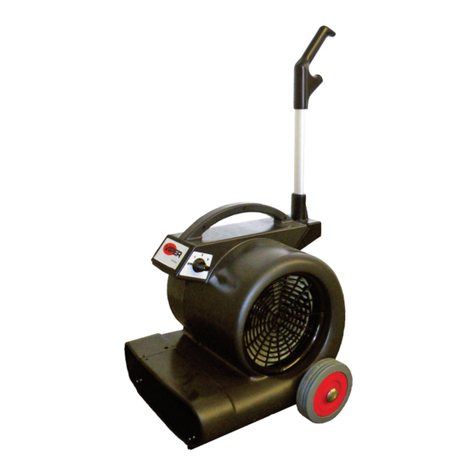
Viper
Viper Whiptail WT3SPD quick start guide

Carrier
Carrier Idrofan 42GR ATM installation instructions
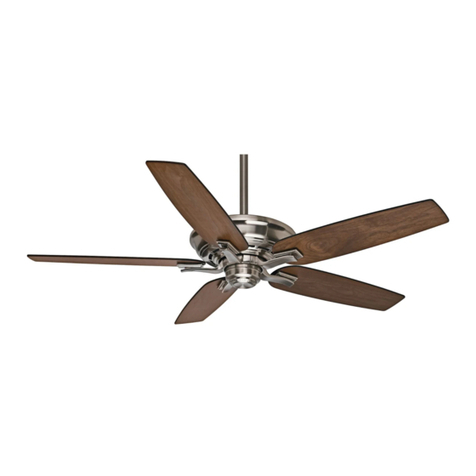
Casablanca
Casablanca Academy owner's manual
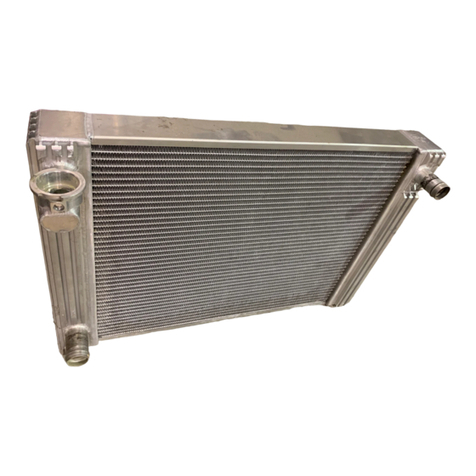
Flex-a-Lite
Flex-a-Lite 52185 installation instructions
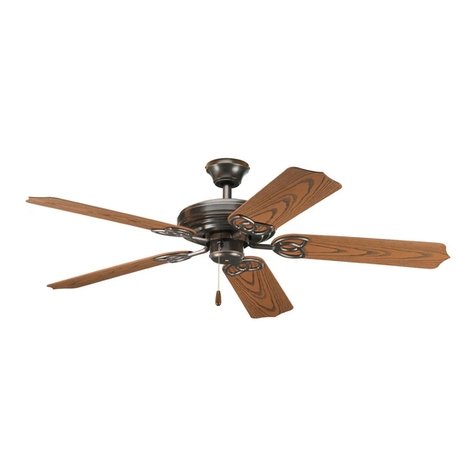
Progress Lighting
Progress Lighting EF200D installation manual

W. L. Gore
W. L. Gore Screw-In Vents Installation guidelines

TERMOTECNICA PERICOLI
TERMOTECNICA PERICOLI EOS 42/1 Instruction booklet

M&G
M&G DuraVent PolyPro installation instructions
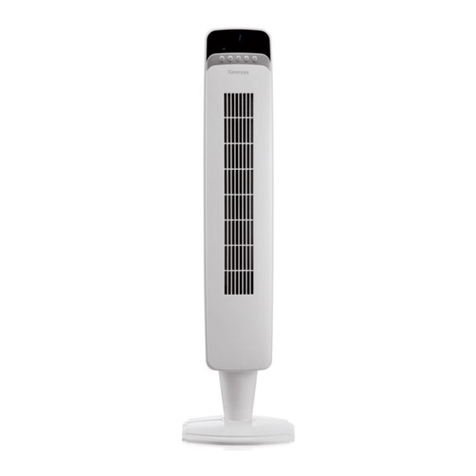
Kenmore
Kenmore 405.35040510 Use & care guide
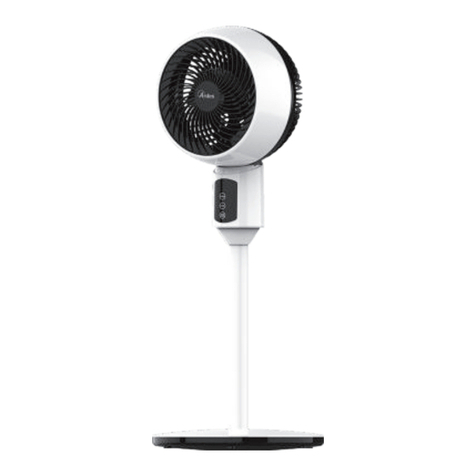
ARDES
ARDES AR5CIR01 Instructions for use
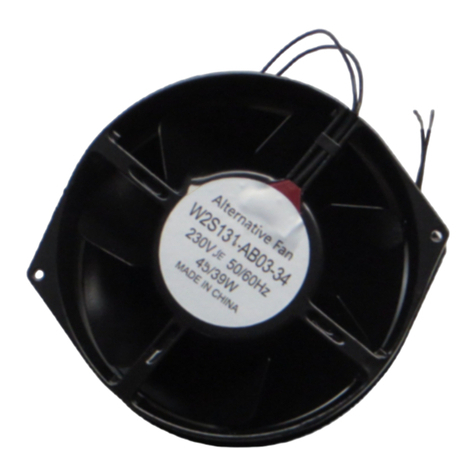
Ebmpapst
Ebmpapst W2S130-AB03-34 operating instructions

Home Decorators Collection
Home Decorators Collection 91144 Use and care guide


